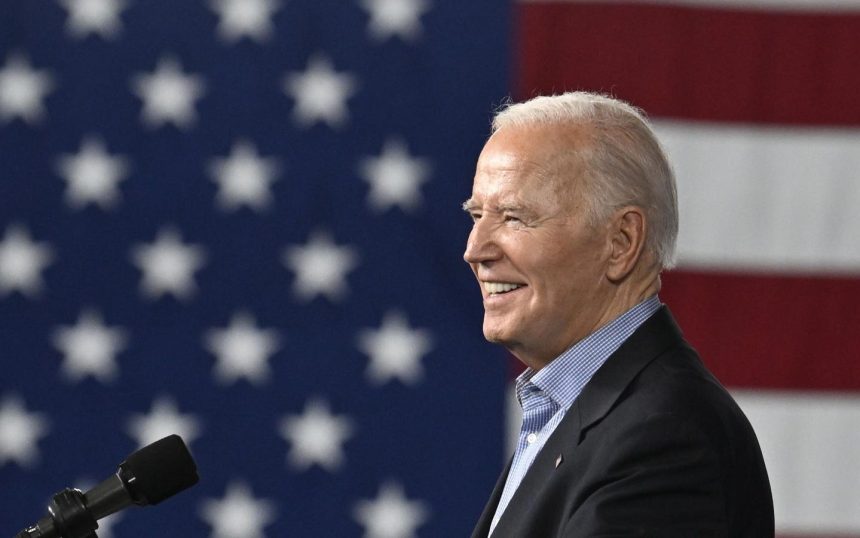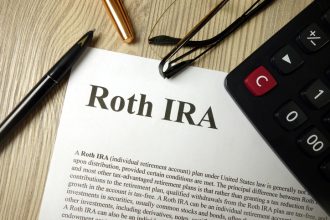Last week, President Joe Biden praised his administration’s efforts to provide debt relief to borrowers, noting in his State of the Union address that four million people have received student loan forgiveness since he took office. The administration achieved this largely through fixes and “improvements” to existing programs, many of which were plagued by historic problems.
But the Biden administration is also working on developing a new loan forgiveness plan, which could expand student debt relief even further. This plan will feature a new pathway for borrowers to request relief based on financial hardships. And last month, the Education Department took a significant step toward making this new program a reality.
Here’s what borrowers should know about Biden’s newest student loan forgiveness plan.
Biden’s Hardship Student Loan Forgiveness Option Is Part Of Broader Initiative
The new hardship student loan forgiveness initiative is actually part of a wider effort to create a new debt relief program in place of the one that the Supreme Court rejected last summer. Biden’s latest loan forgiveness plan is being created under a different legal authority — the Higher Education Act, rather than the HEROES Act of 2003 (which was the basis for Biden’s first plan). The HEA contains a provision that allows the Education Department to “compromise” or “waive” federal student debt obligations in certain circumstances. Biden administration officials hope that relying on the HEA’s compromise authority will ground the new loan forgiveness program on firmer legal footing.
According to draft regulations released by the Education Department last fall, the plan fill focus on four groups of borrowers, in addition to those experiencing financial hardship. This includes borrowers who took out their loans over 20 years ago, those who attended schools that wound up providing no value, borrowers who owe significantly more now than what they borrowed despite years in repayment, and those who qualify but haven’t applied for relief under existing student loan forgiveness programs.
Multiple Ways To Show Hardship Under New Student Loan Forgiveness Plan
The Education Department released another set of draft regulations governing hardship-based student loan forgiveness in advance of a key set of hearings last month, focused specifically on hardship-based student loan forgiveness. According to the proposed rules, borrowers would have multiple ways to demonstrate financial hardship under the new plan. These include:
- Age and demographics;
- Overall financial picture including income, expenses, and other debts;
- The borrower’s student loan repayment history;
- Demonstrated financial need through approval under other means-tested programs, such as prior receipt of Pell Grants or current eligibility for certain government assistance programs;
- Medical or health issues;
- Educational attainment and outcomes relative to the program attended.
Consensus Reached On Details Of Hardship-Based Student Loan Forgiveness
The Biden administration is developing the new HEA student loan forgiveness plan through a process called negotiated rulemaking, where a committee of individuals representing key constituencies hold public meetings to discuss the Education Department’s proposals. If the committee reaches a consensus on proposed regulatory language governing aspects of the program, the department adopts that agreed-upon regulatory text. If not, the department has more flexibility to make changes or tweaks.
The department’s final negotiated rulemaking hearing that was held last month focused specifically on hardship-based student loan forgiveness. The rulemaking committee reached a consensus on the Biden administration’s draft regulations. As a result, the final version of this aspect of the HEA program should look very much like the one the committee agreed on.
This was a key step in the negotiated rulemaking process, and now the Biden administration can proceed in finalizing the loan forgiveness program.
Timing On New Biden Student Loan Forgiveness Plan In 2024
While the public hearing portion of the negotiated rulemaking process is over, there are still steps the Education Department must take before the new student loan forgiveness program goes live.
First, the department must release a final version of the regulations governing the new plan. This is expected to happen in May. That will then trigger a period of public comment, where individuals and organizations can submit feedback to the department.
After that, the department will implement the final rules, and borrowers can start applying. Usually, this happens the year following the publication of final regulations (which would mean 2025). But advocates widely expect the Biden administration to utilize early implementation authority available under the HEA, potentially allowing the program to go live this fall, or possibly as soon as this summer.
Legal Challenges Could Block Biden’s New Student Loan Forgiveness Plan
Biden’s latest student loan forgiveness plan is almost certainly going to be challenged in court, as his previous plan was.
Administration officials are hoping that the new program will have a better chance of surviving a legal challenge for a number of reasons. First, the underlying legal authority provided by the HEA expressly allows the Education Department to cancel student debt, in contrast to statutory language in the HEROES Act, which is more generalized. In addition, the Education Department is going through a formal negotiated rulemaking process involving public hearings and opportunities for the public to submit comments, which was not done for Biden’s initial plan, as the HEROES Act allows the department to bypass this regulatory process. Finally, the new HEA plan is smaller in scope than Biden’s first plan and targeted to specific borrowers; this may be an attempt to avoid scrutiny under the so-called “Major Questions Doctrine,” a conservative legal theory trumpeted by Chief Justice John Roberts that invites more rigorous judicial scrutiny for programs that can have significant political or economic ramifications.
A key question in any legal challenge will be whether a court orders an injunction while litigation proceeds. An injunction could halt implementation of any student loan forgiveness until core legal questions are decided. Courts issued injunctions to prevent student loan forgiveness under Biden’s initial debt relief plan, and implementation remained frozen until the program was eventually derailed by the conservative majority on the Supreme Court. As a result, no one received student loan forgiveness.
Other Student Loan Forgiveness Options Based On Hardship
While Biden’s latest loan forgiveness plan tied to hardship is not yet available, other programs are.
Borrowers who are unable to work (or can work only minimally) due to a disabling medical condition can apply for federal student loan forgiveness through the Total and Permanent Disability discharge program. The Biden administration recently revamped the TPD discharge program to make it easier for borrowers to receive, and keep, their relief.
Those who have lower incomes and have difficulty affording their payments may want to look into income-driven repayment plans, particularly Biden’s new SAVE plan. SAVE can provide affordable monthly payments, and can even result in a borrower having no payment obligation if they are earning below the program’s income exclusion threshold. SAVE, like other IDR plans, can also result in student loan forgiveness after 20 or 25 years, but that term can be reduced to as little as 10 years in certain circumstances.
The Biden administration also is implementing a new bankruptcy policy that makes it easier for borrowers experiencing hardship to get their student loans discharged in bankruptcy. Only a few hundred borrowers have tried getting relief under the new bankruptcy guidance so far, suggesting the policy is being under-utilized.
Read the full article here
















